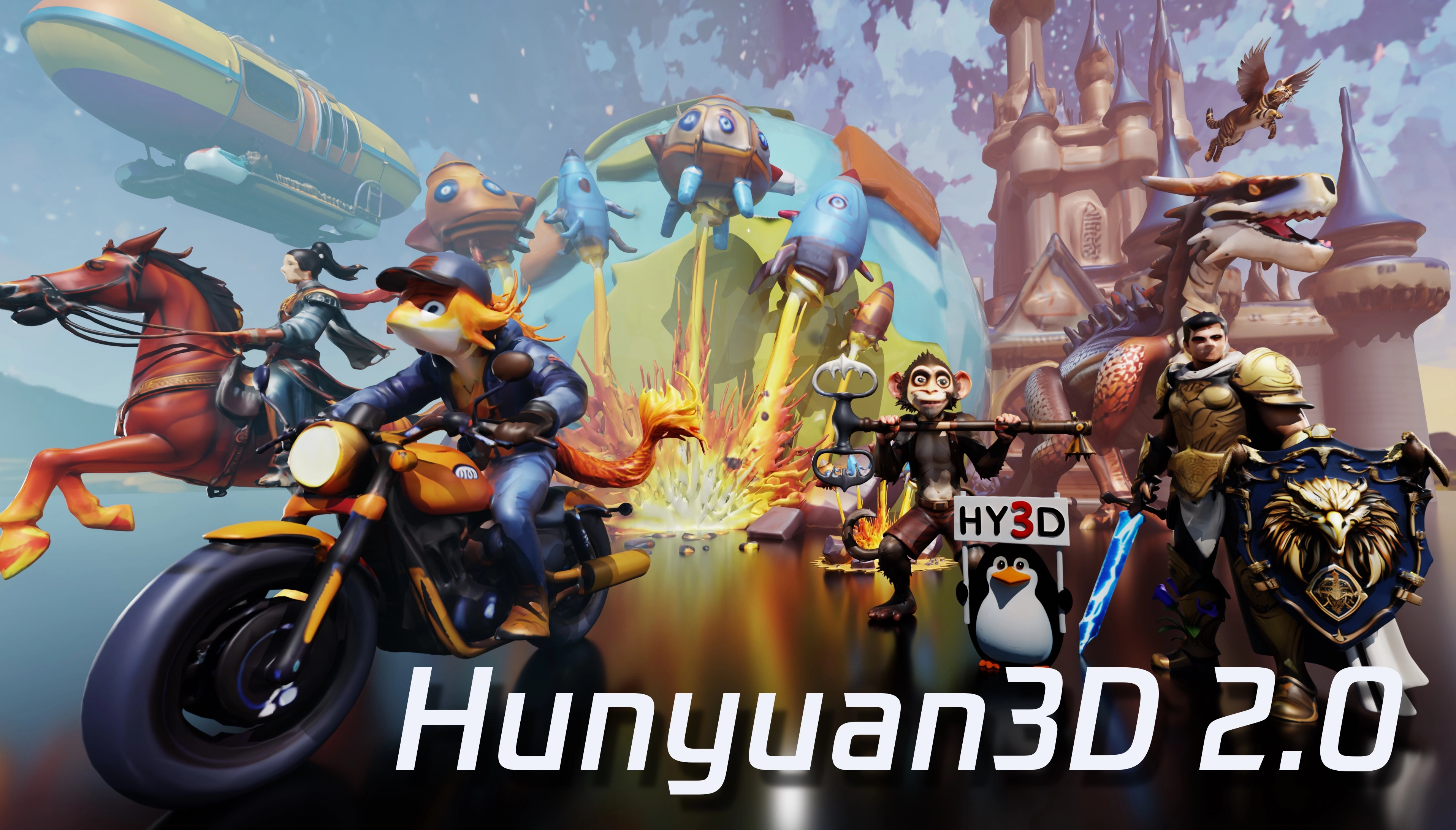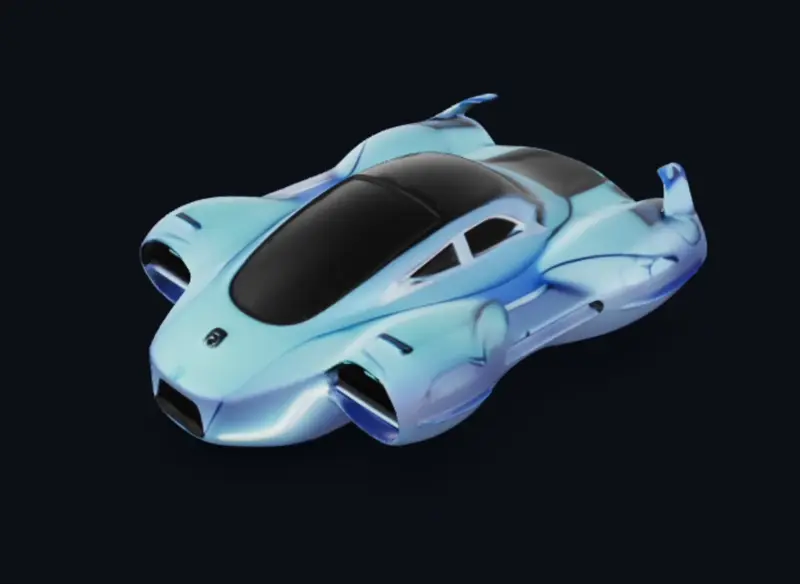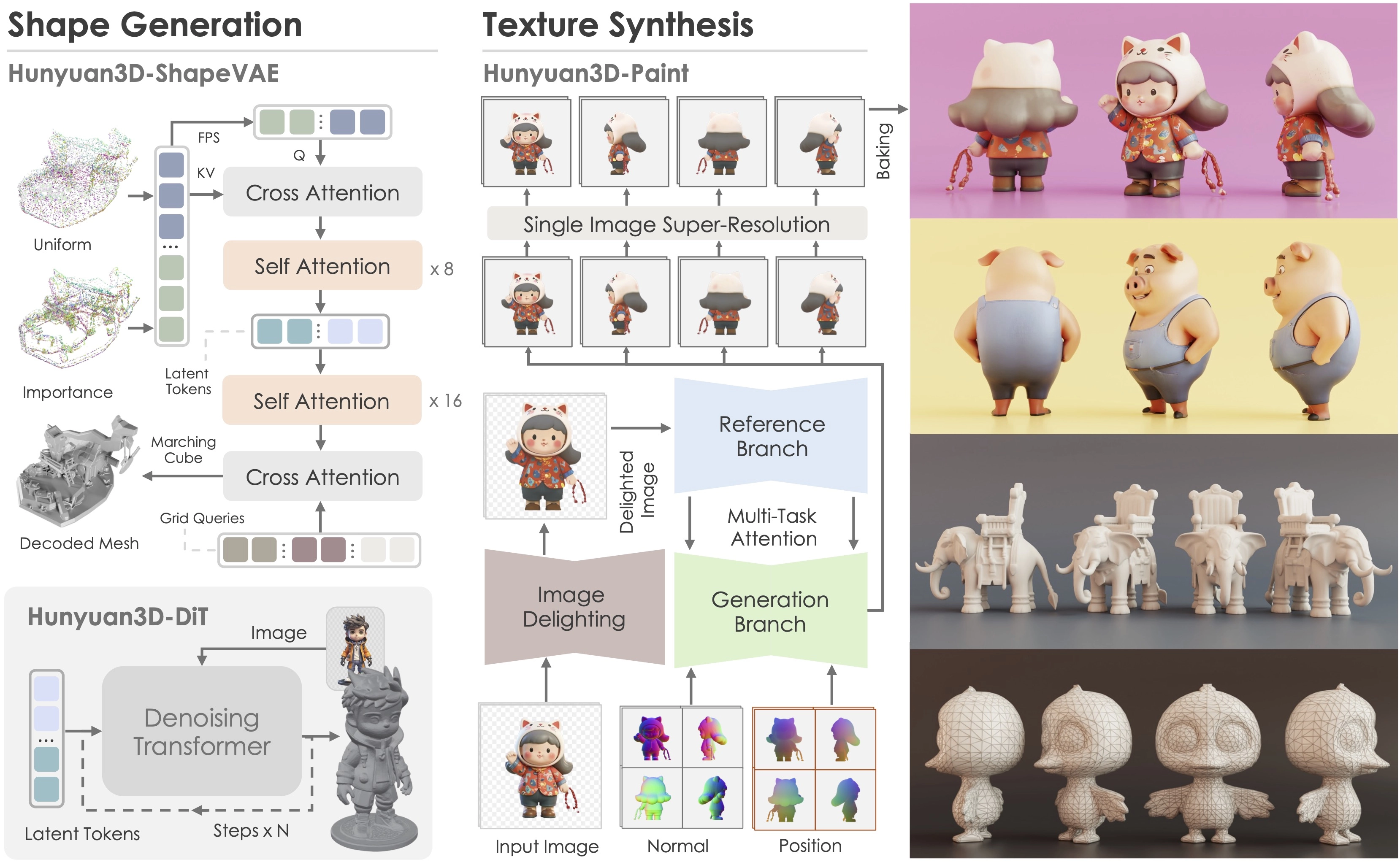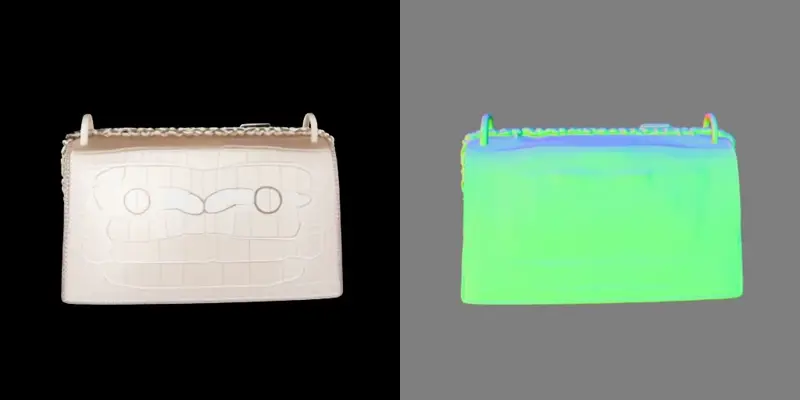How Tencent's Hunyuan3D 2.0 is Redefining AI-Driven 3D Content Creation
Published on January 24, 2025 by Louis Gauthier

Tencent's Hunyuan3D 2.0 is the latest advancement in AI-driven 3D content generation, setting new standards for quality, efficiency, and versatility across multiple industries. Building upon the foundations of its predecessor, Hunyuan3D 2.0 integrates cutting-edge neural rendering techniques and real-time data processing capabilities, enabling the creation of highly detailed and realistic 3D assets with unparalleled speed. This breakthrough positions Tencent at the forefront of the rapidly evolving 3D modeling landscape, offering a powerful, open-source tool for developers, designers, and businesses alike.
In our previous post about Microsoft’s TRELLIS Understanding TRELLIS: Microsoft’s Scalable AI Model for 3D Content Generation, we explored its innovative approach to 3D content generation. Released in early December 2024, TRELLIS has demonstrated how swiftly AI technologies in this space are advancing. Similarly, Tencent's Hunyuan3D 2.0 exemplifies the rapid evolution and competitive landscape of AI-driven 3D modeling tools. In this post, we'll delve into the release and overview of Hunyuan3D 2.0, explore its advanced capabilities, examine its diverse applications across various sectors, and assess its broader impact on the industry. Additionally, we'll showcase a comparison of input images versus TRELLIS and Hunyuan3D outputs to highlight the advancements.

Prompt: A detailed 3D model of a futuristic flying car with a sleek aerodynamic design, glowing blue underlights, and rotating thrusters.
Release and Overview of Tencent Hunyuan3D 2.0
Hunyuan3D 2.0, released on January 21, 2025, marks a significant leap in 3D modeling and artificial intelligence, leveraging Tencent’s proprietary Hunyuan AI framework. This latest iteration introduces a refined architecture that enhances both efficiency and scalability. The model employs a multi-modal generative AI approach, integrating advanced neural rendering techniques with real-time data processing capabilities. This allows for the creation of highly detailed and realistic 3D assets with minimal computational overhead.
A standout innovation in Hunyuan3D-DiT is its reliance on flow-based diffusion transformers, which leverage advanced geometric and diffusion priors to ensure unparalleled precision in creating fine-grained 3D geometries. This process begins with Hunyuan3D-ShapeVAE, a neural representation model that employs novel importance sampling techniques to capture intricate surface details and ensure shape accuracy. Paired with Hunyuan3D-Paint, the system generates vibrant, multi-view-consistent texture maps tailored to the input geometry.
Unlike many prior models, Hunyuan3D 2.0 bridges the gap between large-scale 3D asset creation and efficient computation. For instance, its dual-stream attention mechanism ensures alignment between text or image prompts and the resulting 3D models, while multi-task attention fosters multi-view texture consistency. The result is a framework capable of producing seamless, lighting-invariant textures that preserve detail and realism.

Hunyuan3D 2.0 Architecture Overview: The two-stage pipeline of Hunyuan3D 2.0, showcasing the Hunyuan3D-DiT and Hunyuan3D-Paint components for geometry and texture generation.
Capabilities of Tencent Hunyuan3D 2.0
Advanced Geometry and Texture Generation
Tencent Hunyuan3D 2.0 introduces two core components—Hunyuan3D-DiT and Hunyuan3D-Paint—that significantly enhance geometry and texture generation. Hunyuan3D-DiT focuses on creating detailed and accurate 3D geometries from simple inputs like 2D images or text descriptions. Hunyuan3D-Paint specializes in generating high-resolution textures, enabling ultra-realistic surface details. Together, these components allow users to produce 3D models that are both visually compelling and geometrically precise.
The system achieves exceptional performance metrics, with a reported CLIP score of 0.809, surpassing most open-source and proprietary alternatives (VentureBeat). This high score reflects the model's ability to align visual and textual representations effectively, ensuring that the generated 3D assets closely match user inputs.
Speed and Efficiency in 3D Model Creation
One of the standout features of Hunyuan3D 2.0 is its ability to drastically reduce the time required for 3D model creation. Traditional 3D modeling processes often take days or even weeks, depending on the complexity of the asset. Hunyuan3D 2.0, however, can generate detailed 3D models in as little as 25 seconds, with smaller versions taking just 10 seconds (Creative Bloq). This speed is made possible by Tencent's innovative approach to balancing computational demands with output quality. Unlike other systems that require massive computing power, Hunyuan3D 2.0 employs optimized algorithms to deliver high-resolution results without overburdening hardware.
This capability is particularly beneficial for industries like e-commerce, where businesses can quickly generate 3D representations of products, and for game development, where rapid prototyping of characters and environments is essential.
Multi-Input Compatibility and Workflow Integration
Hunyuan3D 2.0 supports a wide range of input formats, including text descriptions, 2D images, and even sketches. This flexibility allows users from various industries to adopt the technology without needing specialized input data. For instance, a user can provide a simple 2D reference image, and the system will generate multiple 2D views to construct a complete 3D model.
In addition to input flexibility, Hunyuan3D 2.0 integrates seamlessly with standard design software, making it practical for immediate use in professional settings. The system's open-source nature, with code available on platforms like GitHub and Hugging Face, further enhances its accessibility. Developers can customize the tool to fit their specific workflows, while artists can use it as a supplementary tool to focus on creative aspects rather than technical details.
Comparison Between TRELLIS and Hunyuan3D 2.0
When tasked with generating a textured 3D model of a Dior handbag, both TRELLIS and Hunyuan3D 2.0 deliver excellent results in terms of the overall 3D shape, accurately capturing the geometry and proportions of the item. However, the key difference lies in the quality of textures and lighting. Hunyuan3D 2.0 outperforms TRELLIS by producing significantly more realistic and detailed textures, along with lighting effects that closely mimic real-world conditions. This result is particularly impressive given that the handbag image is of a specific item the model is unlikely to have encountered during training. The advanced texture synthesis capabilities of Hunyuan3D-Paint and its multi-view consistency contribute to this superior performance, showcasing the system's ability to handle intricate details with precision.
Input Image

Hunyuan3D 2.0 Output

TRELLIS Output

Applications of Tencent Hunyuan3D 2.0 in Various Industries
Video Game Development
Tencent's Hunyuan3D 2.0 has revolutionized the video game development process by significantly reducing the time required to create 3D assets. The system enables developers to generate high-resolution 3D models and textures in minutes, compared to the traditional timeframe of five to ten days. This capability is particularly impactful for large-scale game development projects, where the demand for detailed and immersive environments is high. By leveraging the Hunyuan3D-DiT model for geometry generation and the Hunyuan3D-Paint model for texture synthesis, developers can create lifelike characters, objects, and environments that enhance the gaming experience.
For example, Tencent has internally used Hunyuan3D 2.0 for its own video game productions, achieving faster prototyping and asset creation (Yahoo Tech). This efficiency allows game studios to allocate more resources to other areas, such as gameplay mechanics and narrative development, ultimately improving the overall quality of the final product.
Social Media and Virtual Avatars
The rise of virtual avatars in social media platforms has created a demand for tools that can generate realistic and customizable 3D representations of users. Tencent's Hunyuan3D 2.0 addresses this need by enabling the creation of high-quality avatars from a single image or text prompt. The system's ability to align generated geometries with input conditions ensures that avatars closely resemble the source material, making them more relatable and engaging for users.
Social media platforms can integrate Hunyuan3D 2.0 to offer users the ability to design personalized avatars for use in virtual meetings, gaming, and online interactions. This application not only enhances user engagement but also opens up new opportunities for monetization through the sale of avatar customization options. The open-source nature of Hunyuan3D 2.0, available on platforms like Hugging Face, further encourages third-party developers to create plugins and extensions for social media platforms, expanding its utility.
Manufacturing and Prototyping
In the manufacturing industry, the ability to quickly create accurate 3D prototypes is critical for product design and development. Hunyuan3D 2.0 simplifies this process by generating high-resolution 3D models from conditional images or text descriptions. This capability is particularly useful for industries such as automotive, aerospace, and consumer electronics, where prototyping is an essential step in the production cycle.
The Hunyuan3D-Studio platform provides tools for manipulating meshes and adding animations, enabling designers to visualize and test their prototypes before moving to physical production. For instance, designers can use the platform to scale, rotate, and animate 3D models, ensuring that the final product meets all specifications. This streamlined workflow reduces the time and cost associated with traditional prototyping methods, making it an invaluable tool for manufacturers (AI Share Net).
Film and Animation
The film and animation industries require detailed 3D assets to create visually stunning scenes and characters. Hunyuan3D 2.0's ability to generate high-resolution textures and geometries makes it an ideal tool for these applications. The system's Hunyuan3D-Paint model excels in creating vivid and realistic textures, while the Hunyuan3D-DiT model ensures that the generated shapes align perfectly with the input conditions.
Animation studios can use Hunyuan3D 2.0 to create assets for movies, TV shows, and advertisements, significantly reducing the time and effort required for manual modeling and texturing. The platform's support for animation features, such as keyframe setting and animation path creation, further enhances its utility in this domain. By automating repetitive tasks, Hunyuan3D 2.0 allows artists to focus on the creative aspects of their work, resulting in higher-quality productions.
Education and Training
Hunyuan3D 2.0 also has significant applications in education and training, particularly in fields that require 3D visualization. For example, medical schools can use the system to create detailed anatomical models for teaching purposes, while engineering programs can leverage it to design and simulate complex machinery. The platform's user-friendly interface ensures that both professionals and students can easily create and manipulate 3D assets, making it accessible to a wide audience.
In addition to academic settings, Hunyuan3D 2.0 can be used for corporate training programs. Companies can create realistic simulations to train employees in areas such as equipment operation, safety protocols, and customer service. The ability to generate customized 3D models and environments ensures that the training materials are relevant and effective, improving learning outcomes (VentureBeat).
Architectural Visualization
Architects and interior designers can benefit from Hunyuan3D 2.0's capabilities to create realistic 3D visualizations of buildings and spaces. The system allows users to generate detailed models of architectural designs, complete with high-resolution textures and animations. This application is particularly useful for presenting design concepts to clients, as it provides a clear and immersive representation of the final product.
The platform's ability to generate 3D assets from conditional images or text prompts simplifies the design process, enabling architects to quickly iterate on their ideas. Additionally, the open-source nature of Hunyuan3D 2.0 encourages the development of specialized tools and plugins for architectural applications, further enhancing its utility in this field.
E-Commerce and Virtual Try-Ons
The e-commerce industry is increasingly adopting 3D technologies to enhance the online shopping experience. Hunyuan3D 2.0 can be used to create realistic 3D models of products, allowing customers to view items from multiple angles and even try them on virtually. This application is particularly valuable for fashion and furniture retailers, where the ability to visualize products in a real-world context can significantly influence purchasing decisions.
Retailers can integrate Hunyuan3D 2.0 into their websites and mobile apps to offer interactive shopping experiences. For example, customers can upload a photo of themselves to see how a piece of clothing would look on them or use augmented reality to visualize how a piece of furniture would fit in their home. These features not only improve customer satisfaction but also reduce return rates, benefiting both consumers and businesses (Yahoo Tech).
Upcoming Use Cases
One exciting application of Hunyuan3D 2.0 is generating 3D renders of product images for data augmentation in machine learning models. By inputting pictures of products, the system can produce high-quality 3D models and textures, enhancing datasets for training purposes. We will explore this use case in detail in an upcoming post, showcasing how 3D generation models can improve data quality and model performance.
Conclusion
The release of Tencent Hunyuan3D 2.0 marks a significant milestone in the realm of 3D modeling and artificial intelligence, offering a suite of capabilities that cater to the evolving demands of various industries. Its advanced geometry and texture generation, coupled with real-time rendering capabilities, empower developers and creators to produce high-quality 3D assets in a fraction of the time previously required. The model's applications span a wide array of sectors, from gaming and e-commerce to healthcare and automotive design, illustrating its versatility and potential to transform traditional workflows.
As industries increasingly adopt this technology, the implications for efficiency, cost reduction, and enhanced user experiences are profound. Furthermore, Tencent's focus on ethical AI use, transparency, and its open-source, state-of-the-art framework fosters trust and encourages responsible adoption of these advanced tools. As we look to the future, Hunyuan3D 2.0 not only represents a technological advancement but also a shift in how we conceptualize and create 3D content, ultimately shaping the future of digital interaction and design. The ongoing collaboration between Tencent and industry stakeholders will likely lead to further innovations, ensuring that Hunyuan3D 2.0 remains at the forefront of 3D modeling technology.
For a deeper understanding of the rapid advancements in AI-driven 3D content generation, refer to our previous discussion on Microsoft’s TRELLIS Understanding TRELLIS: Microsoft’s Scalable AI Model for 3D Content Generation, which highlights how quickly this field is evolving and the competitive landscape that drives continuous innovation.